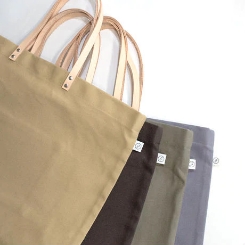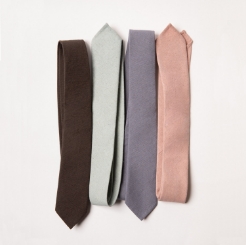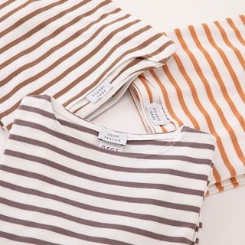FOOD TEXTILE STORY vol.1
A bridge between food and apparel.
A sustainable upcycle.
2022.06.15
Toyoshima and Co., Ltd.
FOOD TEXTILE Project Leader
Yoshihiro Tanimura

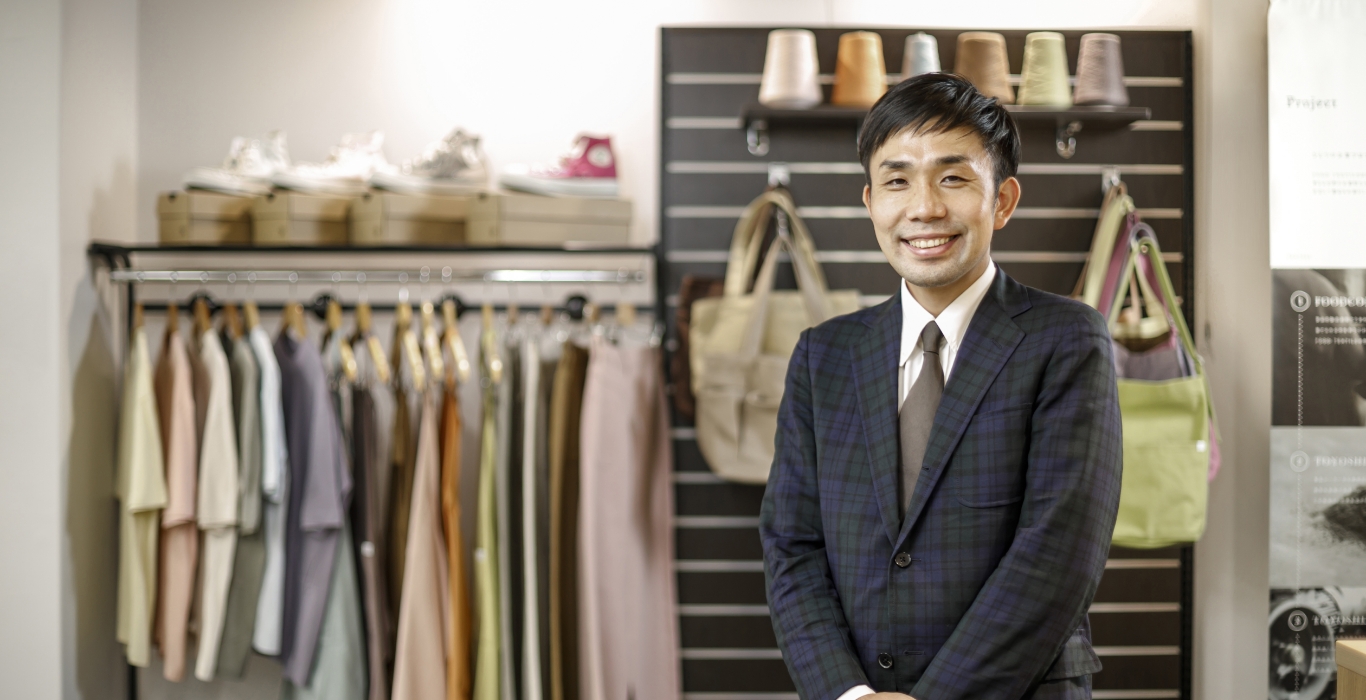
Toyoshima and Co., Ltd.
FOOD TEXTILE Project Leader
Yoshihiro Tanimura
Where have the thoughts and feelings of makers gone?
A strong sense of crisis exists concerning the apparel industry.
Tanimura desired to work for a trading company, but not in the steel or energy sector.
He was interested in clothing and therefore decided to work in a textile trading company as they dealt with products familiar to him. From the time he entered the company, he worked frantically, but just before reaching 30, he felt that something was wrong with the industry, and developed a sense of crisis.
“Are we okay just to go on like this? It can’t be right.”
“Cheap fashion is rapidly expanding, low-cost products are being mass-produced and then discarded one after another according to the trend. This cycle has become commonplace.
Buyers choose according to the price and the makers produce with the assumption that the products would be discarded. That’s not how things should be, right?”
Orders are received from the manufacturers and purchase orders are sent to the factories. With that cycle, could the makers have any attachment to the products?
Tanimura thought something was not right. He came to a standstill.
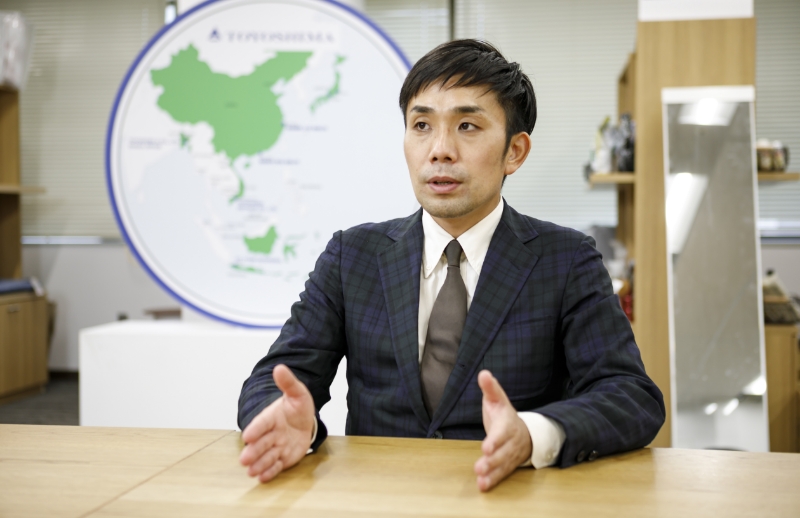
“Choosing and putting on new clothes is exciting.
Clothing should incite special feelings such as happiness and excitement. However, if the current situation continues, the industry will be heading towards collapse.
I came to feel insecure even about my own future.”
I participated in cross-industry exchange meetings to gain some insight. At that time, I met a CSR personnel from a leading food manufacturer. He had concerns about how to make effective use of residue from the large amounts of vegetables used for products such as pre-cut salads. “To reduce food loss, could these leftover vegetables be made into dye?” It was he who made the suggestion.
The key to the project was an encounter with a dye lab company with a particular focus.
“It’s true that there are fabrics dyed with natural dye. However, I felt that it would be difficult to start a business because traditional issues such as fading would be a deterrent.
However, as employees with common concerns such as mass production and mass disposal, we contemplated on what could be done together.
At that time, the thought of a dye lab company president who was our long-time business partner crossed my mind.”
This individual had a unique background. He had been working in a major automobile manufacturing company when he became desirous of engaging in meaningful monozukuri (creat products include the development of entire products,design,quolity,innovation with considering sustinability)without being cost-bound and developed a dyeing technique.
“Just because fabric is dyed with collected food residue does not guarantee successful sales. We have to think about what added value can be given to it.” Tanimura was greatly impressed by his constant focus on the distant future of the industry.
In promoting this project, Tanimura thought about what the core value would be. The first point was “natural dye,” meaning going back to the roots of the textile.
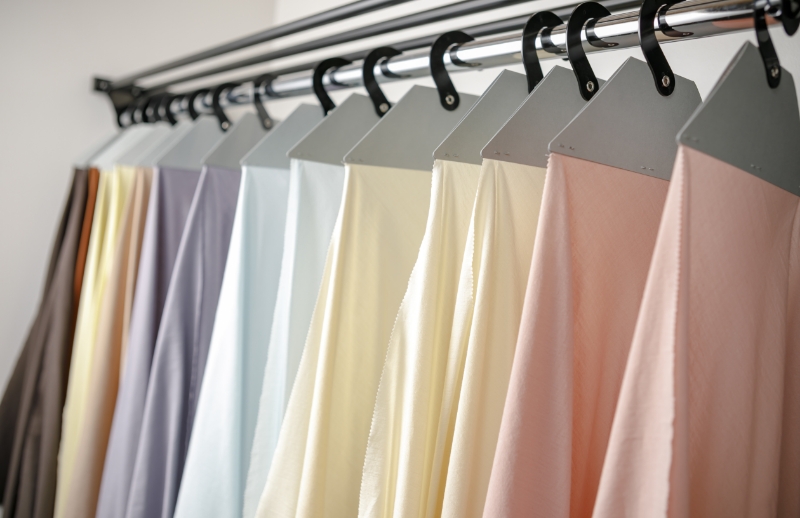
“Originally, the role of 。clothing is to protect the body with fabric dyed using natural dye. Japanese people cherished such clothing and kept them for an extended period. We wanted to once again create something that would make people want to cherish and wear for a long time.”
The second point was domestic production, which the president of the dye lab company was particular about.
“Currently, in the apparel industry, more than 90% of the products are being produced overseas. However, this was the only company having transactions with a domestic dyeing factory. We agreed that it is meaningful to create everything domestically with unique Japanese technology starting from collection of food residue to dyeing and textile production. Based on this common ideal, undertaking the task of dyeing was agreed upon.
Other companies were also endeavoring to engage in “environmentally-friendly initiatives.” However, due to the time-consuming nature of such projects, they did not last long. We owe the success of this endeavor to the president having sincerity and passion toward the dyeing project. Our perseverance in continually asking for his help was also a contributing factor.
Consequently, we introduced the textile dyed with food residue on a trial basis at an exhibition. Tanimura felt that the product was of good quality but was apprehensive that it may not take off as a business.
However, the words of the president gave him a supportive push.
”Go ahead with it.”
Thus, the ”FOOD TEXTILE" project was launched in February 2015.
Boost recognition through collaboration with a major company!
“It’s true that this task is complex and costly.
However, if there is added value and the product measures up to it, the product will surely sell.
Branding is vital. First of all, we need to boost recognition by collaborating with a famous company.
Who produced the food residue that the dye comes from and which manufacturer made the product are vital factors.
Next, we attached great importance on the image. “Aiming for SUTEKI (charm)” is the motto.
Initially, we consulted various manufacturers but the negotiations did not produce results.
Amid that situation, our timing conceded with the launching of Converse’s sustainable series “converse e.c. lab” and we were able to close a deal with them. We were over the moon!”
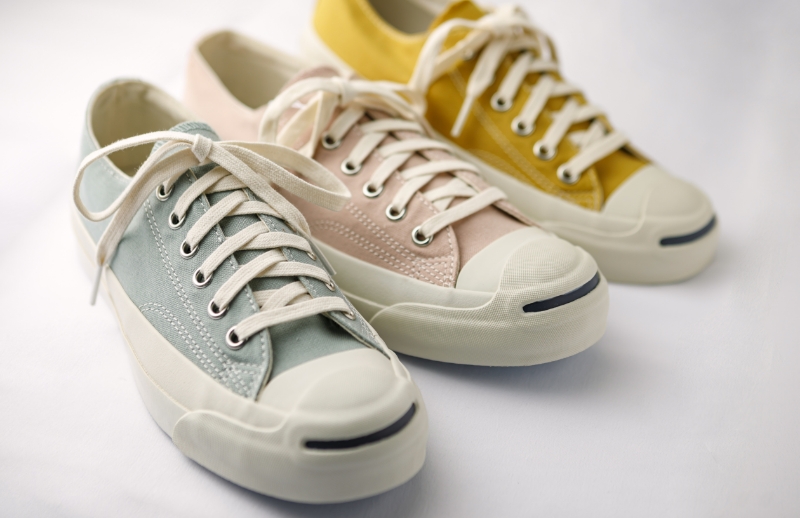
Thereafter, we were able to collaborate with over 20 well-known companies one after another that agreed with FOOD TEXTILE’s philosophy,
such as Kagome, matcha manufacturer “Nanzanen” and Blue Bottle Coffee.
As the project proceeded, we experienced technical difficulties.
For example, tomatoes became yellow, not red, and red turnips somehow turned blue.
Moreover, used coffee grounds contained too much oil and soiled the dyeing kiln. On the other hand, we realized that by adjusting the pH, various colors could be obtained from one food item.
“The business flow changed as customers could now choose from the colors we proposed. Up to that point, it was one-way traffic of just receiving requests.”
We want to nurture and cherish each step.
The FOOD TEXTILE project is just getting going.
It is becoming the focus of in-house attention, and orders are being received, not only from the textile sector but also from “yarn section” which sells thread.
Tanimura is confident that the initiative transcending the framework of the department will produce good results. In the future, he hopes that the project will expand to include interior items such as curtains, chair upholstery, and bedding.
Furthermore, the fabrics to be dyed will likely include not only cotton but also hemp and polyester.
“We realize that this project has become the focus of attention because it has a close affinity with such keywords as SDGs and sustainability. However, we don’t want this project to be transient.
We believe that our role is to continuously connect food and apparel manufacturers as well as the sentiments of the maker and the user. Proper and decent products are made with ultimate care.
We don’t want to rush, but take each step seriously. We want to proceed with this project as a lasting one.” Not recycling but upcycling.
The possibilities are infinite.
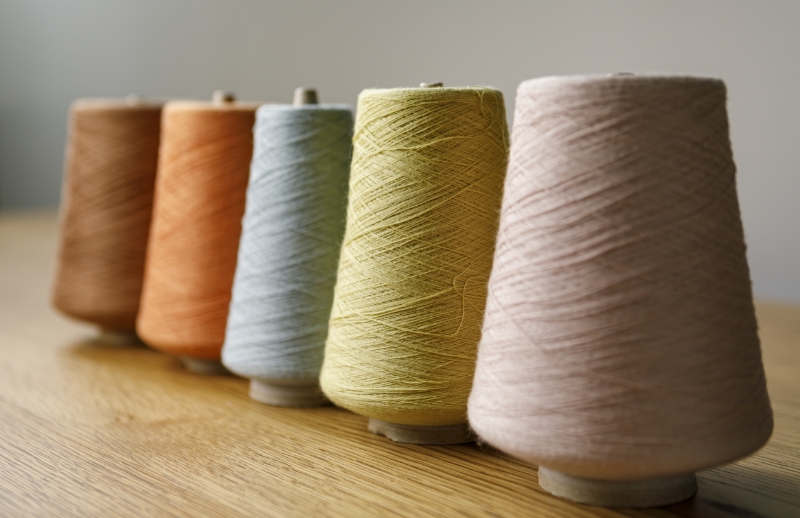
TEXT/ MASHIMO SATOKO
PHOTO/ SUZUKI AKIHIKO
FOOD TEXTILE Item
In addition to products created in collaboration with companies,
FOOD TEXTILE develops its original items that are available online.(https://recirculet.com/foodtextile/)

